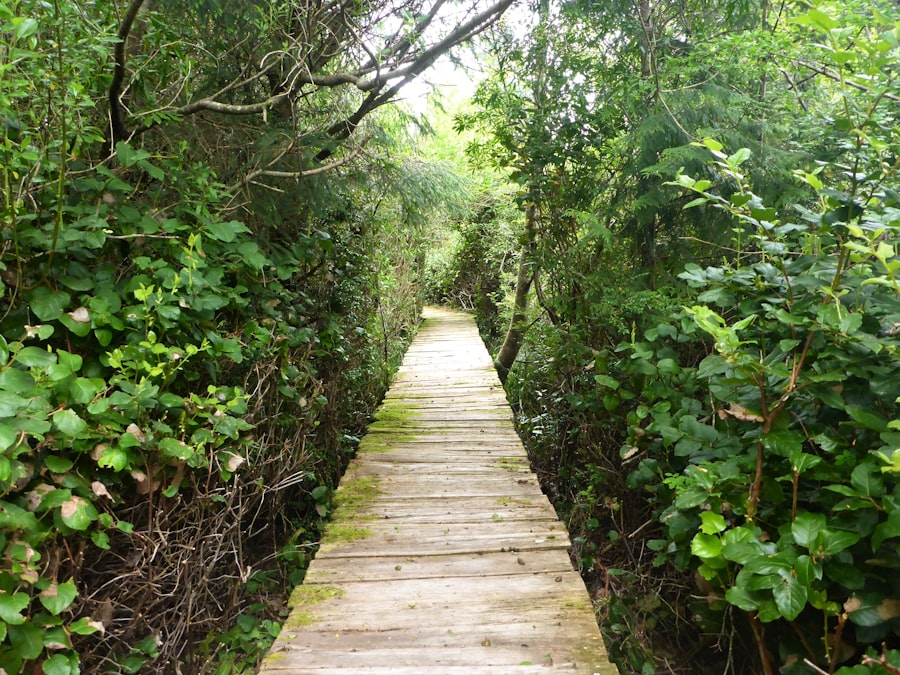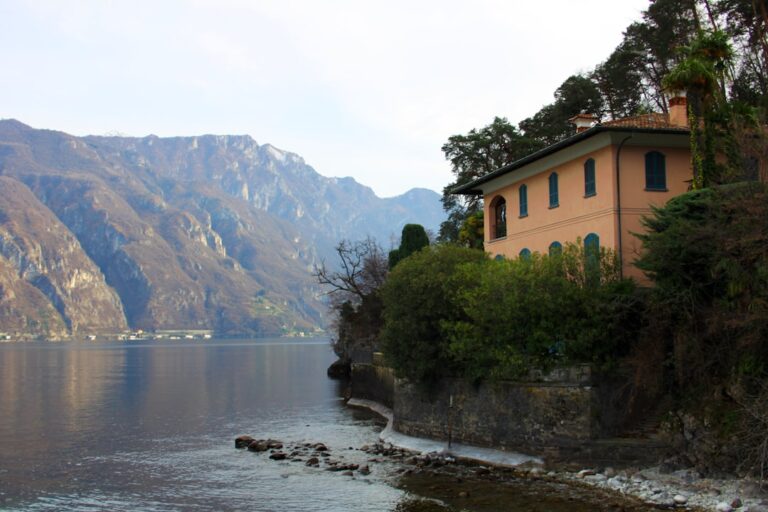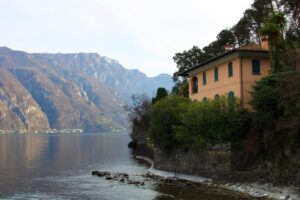In an age characterized by rapid transit and instant gratification, the concept of slow travel emerges as a refreshing antidote. Slow travel encourages individuals to immerse themselves in their surroundings, fostering a deeper connection with the places they visit. This approach emphasizes quality over quantity, urging travelers to savor experiences rather than merely ticking off destinations from a checklist.
By taking the time to explore a location at a leisurely pace, travelers can engage more meaningfully with local cultures, traditions, and communities. The philosophy behind slow travel is rooted in the idea that travel should be about the journey as much as the destination. It invites individuals to step away from the frenetic pace of modern life and embrace a more mindful approach to exploration.
This can manifest in various ways, such as spending extended periods in one location, utilizing local transportation methods, or participating in community activities. The essence of slow travel lies in its ability to transform the act of traveling into a rich tapestry of experiences that resonate on a personal level.
Budget Benefits of Slow Travel
One of the most compelling advantages of slow travel is its inherent budget-friendliness. By choosing to stay longer in one place, travelers can often find more affordable accommodation options, such as vacation rentals or homestays, which typically offer lower rates for extended stays. This contrasts sharply with the traditional travel model, where short stays in hotels can quickly accumulate costs.
For instance, a week-long rental in a local apartment may cost less than three nights in a hotel, allowing travelers to allocate their funds more effectively. Moreover, slow travel encourages the use of local transportation methods, such as buses, trains, or bicycles, which are often more economical than renting cars or relying on taxis. This not only reduces travel expenses but also provides an authentic experience of the local lifestyle.
For example, taking a train through the scenic countryside of Italy not only saves money but also allows travelers to appreciate the landscape and interact with locals along the way. By prioritizing budget-friendly choices and embracing local culture, slow travel can significantly reduce overall expenses while enriching the travel experience.
Health Benefits of Slow Travel

The health benefits associated with slow travel extend beyond mere financial savings; they encompass both physical and mental well-being. By adopting a slower pace, travelers can reduce stress levels significantly. The hurried nature of traditional travel often leads to anxiety and fatigue, as individuals rush from one attraction to another.
In contrast, slow travel promotes relaxation and mindfulness, allowing individuals to fully engage with their surroundings and enjoy moments of tranquility. Additionally, slow travel often involves more physical activity than conventional travel. Walking or cycling through a city or rural area not only enhances the experience but also contributes to better physical health.
For instance, exploring the cobblestone streets of a historic town on foot allows travelers to appreciate architectural details they might miss while driving. This increased physical activity can lead to improved cardiovascular health and overall fitness levels, making slow travel not just a leisurely pursuit but also a beneficial one for the body.
How Slow Travel Can Save Money
| Benefits of Slow Travel | Explanation |
|---|---|
| Reduced Transportation Costs | By taking longer to reach your destination, you can save money on transportation expenses. |
| Lower Accommodation Costs | Staying in a destination for a longer period often allows for cheaper accommodation options. |
| Less Dining Out | With more time in one place, you can cook your own meals and save on dining expenses. |
| Opportunity for Budget-Friendly Activities | Slow travel allows for more time to explore free or low-cost attractions and activities. |
The financial advantages of slow travel are multifaceted and can lead to significant savings over time. One key aspect is the opportunity to cook meals rather than dining out for every meal. Many vacation rentals come equipped with kitchens, allowing travelers to prepare their own food using local ingredients.
This not only cuts down on food expenses but also provides an opportunity to engage with local markets and culinary traditions. For example, purchasing fresh produce from a farmer’s market in France can be both economical and an enriching cultural experience. Furthermore, slow travel often allows for greater flexibility in planning itineraries.
Travelers can take advantage of off-peak seasons when prices for accommodations and attractions are lower. By avoiding the crowds and high prices associated with peak tourist seasons, individuals can enjoy a more authentic experience while saving money. For instance, visiting popular destinations like Bali during the shoulder season can result in substantial savings on lodging and activities while providing a more serene atmosphere for exploration.
Slow Travel and Mental Health
The mental health benefits of slow travel are profound and far-reaching. In our fast-paced world, many individuals experience burnout and stress from constant connectivity and the demands of daily life. Slow travel offers an escape from this relentless pace, allowing individuals to disconnect from technology and reconnect with themselves and their surroundings.
The act of slowing down fosters mindfulness, encouraging travelers to be present in each moment rather than preoccupied with future plans or past experiences. Engaging deeply with local cultures and communities can also enhance emotional well-being. By participating in cultural exchanges or volunteering during their travels, individuals can cultivate a sense of purpose and belonging that transcends mere sightseeing.
For example, volunteering at an animal sanctuary in Costa Rica not only provides meaningful engagement but also fosters connections with like-minded individuals who share similar values. These interactions can lead to lasting friendships and a sense of fulfillment that enriches the overall travel experience.
Tips for Budget-Friendly Slow Travel

To fully embrace the benefits of slow travel while keeping expenses in check, several practical tips can be employed. First and foremost, consider choosing destinations that are known for their affordability. Countries in Southeast Asia or Eastern Europe often provide excellent value for money while offering rich cultural experiences.
Researching local customs and traditions can also enhance the experience without incurring additional costs. Another effective strategy is to prioritize public transportation over private options. Many cities have extensive public transit systems that are both economical and efficient.
For instance, using trams or buses in cities like Budapest or Lisbon allows travelers to navigate easily while saving money on transportation costs. Additionally, consider traveling during off-peak times when prices for flights and accommodations are lower; this not only saves money but also allows for a more relaxed experience without the crowds.
Slow Travel and Physical Health
The physical health benefits of slow travel are often overlooked but are crucial for overall well-being. Engaging in activities such as hiking, biking, or walking not only enhances fitness levels but also allows travelers to explore destinations in a more intimate way. For example, hiking through national parks or along coastal trails provides opportunities for exercise while immersing oneself in nature’s beauty.
Moreover, slow travel encourages healthier eating habits by promoting local cuisine made from fresh ingredients. Instead of resorting to fast food or convenience meals during rushed travels, individuals can savor nutritious meals prepared with locally sourced produce. This shift towards healthier eating not only supports local economies but also contributes to better physical health during travels.
Embracing Slow Travel for Budget and Health Benefits
Embracing slow travel offers a multitude of benefits that extend beyond mere financial savings or physical health improvements; it fosters a holistic approach to exploration that nurtures both mind and body. By prioritizing meaningful experiences over superficial sightseeing, travelers can cultivate deeper connections with the places they visit and the people they meet along the way. The journey becomes an opportunity for personal growth, cultural exchange, and self-discovery.
As individuals increasingly seek ways to enhance their well-being while exploring new horizons, slow travel stands out as a compelling choice that aligns with both budget-consciousness and health-consciousness. By adopting this mindful approach to exploration, travelers can create lasting memories that resonate long after their journeys have ended, enriching their lives in ways that transcend traditional tourism experiences.
FAQs
What is slow travel?
Slow travel is a travel philosophy that emphasizes taking the time to fully experience and immerse oneself in a destination, rather than rushing from one tourist attraction to another. It involves spending more time in fewer locations, using sustainable modes of transportation, and engaging with the local culture.
How does slow travel benefit your budget?
Slow travel can benefit your budget by reducing transportation costs, as you are spending more time in one location and using sustainable modes of transportation such as walking, cycling, or public transit. Additionally, staying in one place for a longer period of time can often lead to cost savings on accommodations and meals, as many places offer discounts for longer stays.
How does slow travel benefit your health?
Slow travel can benefit your health by reducing stress and allowing for a more relaxed and enjoyable travel experience. It also provides opportunities for physical activity, such as walking and cycling, which can contribute to improved physical fitness and overall well-being. Additionally, the slower pace of travel can allow for better sleep and more time for self-care.
What are some tips for incorporating slow travel into your trips?
Some tips for incorporating slow travel into your trips include choosing a few key destinations to focus on, staying in one place for an extended period of time, using sustainable modes of transportation, and seeking out local experiences and activities. It’s also important to prioritize relaxation and flexibility in your travel itinerary.


















